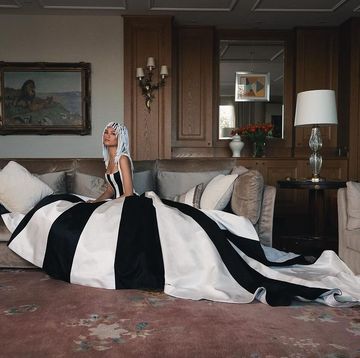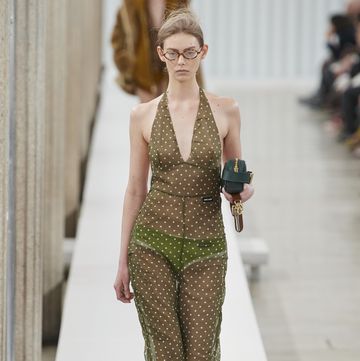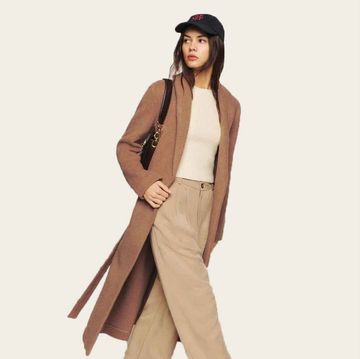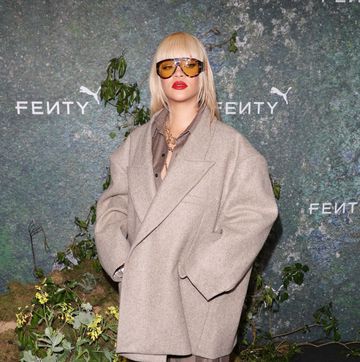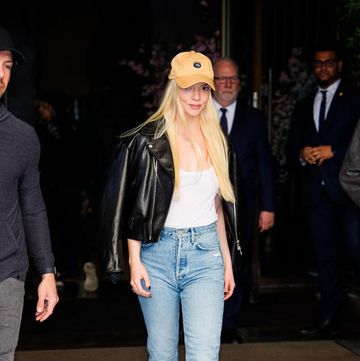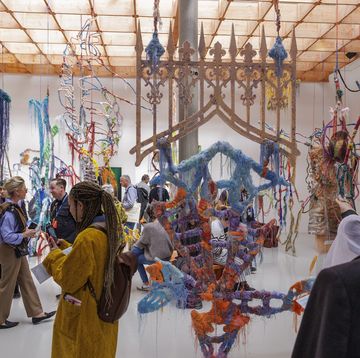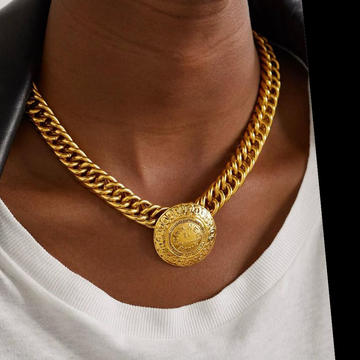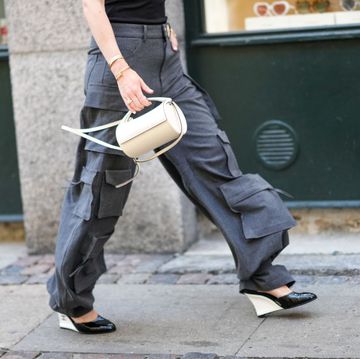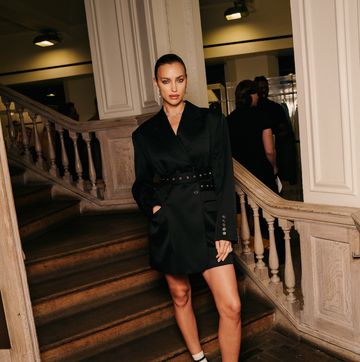Here in Dubai, you can swim with sharks in the worlds largest shopping mall, ride a lift up the worlds tallest building, stay in the worlds only seven-star hotel, and meet some of the worlds richest fashion consumers.
Little wonder, then, that Karl Lagerfeld chose this epic man-made metropolis and billionaires playground as the inspiration and backdrop for Chanels 2014 Cruise collection.
If Chanel were a city, it would be Dubai: obsessively modern and constantly building something newer, bigger, better, world class.
Never one to shy away from an ambitious project, Mr Lagerfeld explained his obsession with Dubai: Because I think its something that has not existed before a city coming out of the sea and sand, I think its fascinating, like [the mythical city of] Atlantis. He might as well have been talking about the magnificent metal tent, rendered in the houses double C logo, that Chanel had erected on an artificial desert island to house the show accessed only by abra (long, wooden taxi boats) which took eight weeks to assemble and will require two weeks to take down again.
Part of the magic of being invited to one of Chanels Cruise, or Métiers dArt, shows which have most recently taken place in Dallas, a derelict castle outside Edinburgh and Singapore is that, as guest Tilda Swinton put it: You never know what to expect, but you know its going to be extraordinary.
The spectacle started with the guests. The Emirati society was out in force, wearing varying degrees of abaya and dishdasha (traditional robes), head-to-toe Chanel and the occasional Christopher Kane miniskirt. They formed an orderly queue along the boardwalk, past the oasis of newly planted cacti and Bedouin tents decorated with poufs and shishas. The fashion press, meanwhile, unaccustomed to queuing and wearing pre-recommended flats couldnt wait to take to their sunken padded seats alongside 10m-tall palm trees sculpted from brass and a catwalk-long buffet and bar.
As for the clothes that came down the catwalk, they were magical. You could see Mr Lagerfelds super-fast brain at work as he played with his themes: Arabian Nights translated into voluminous harem trousers; modern industrial Dubai came embroidered as a sparkling skyline on a navy blue dress or beaming out of the toes of shoes embedded with blue lights; the history of the Emirates played out in vibrant prints replicating mosaic tiles from the 11th century. As ever, his inspirations also served as a new way to download and reinterpret Coco Chanel.
I loved the way he incorporated so many elements of Middle Eastern culture and in a way that was still so Chanel, said the elegant Sheikha Lulu Al-Sabah, an art consultant and member of the ruling family of Kuwait.
So was Mr Lagerfeld thinking of Emirati women when he was designing the collection? Yes and no, he said, dressed in immaculate white rather than his signature black. I think of everything and nothing at the same time. If not, it would be marketing. I dont have a plan, I have a vision.
A vision of the future and the past entwined. Not unlike the vision of Coco Chanel, of whom he mused: I think, if she were around today, this part of the world would really interest her.

